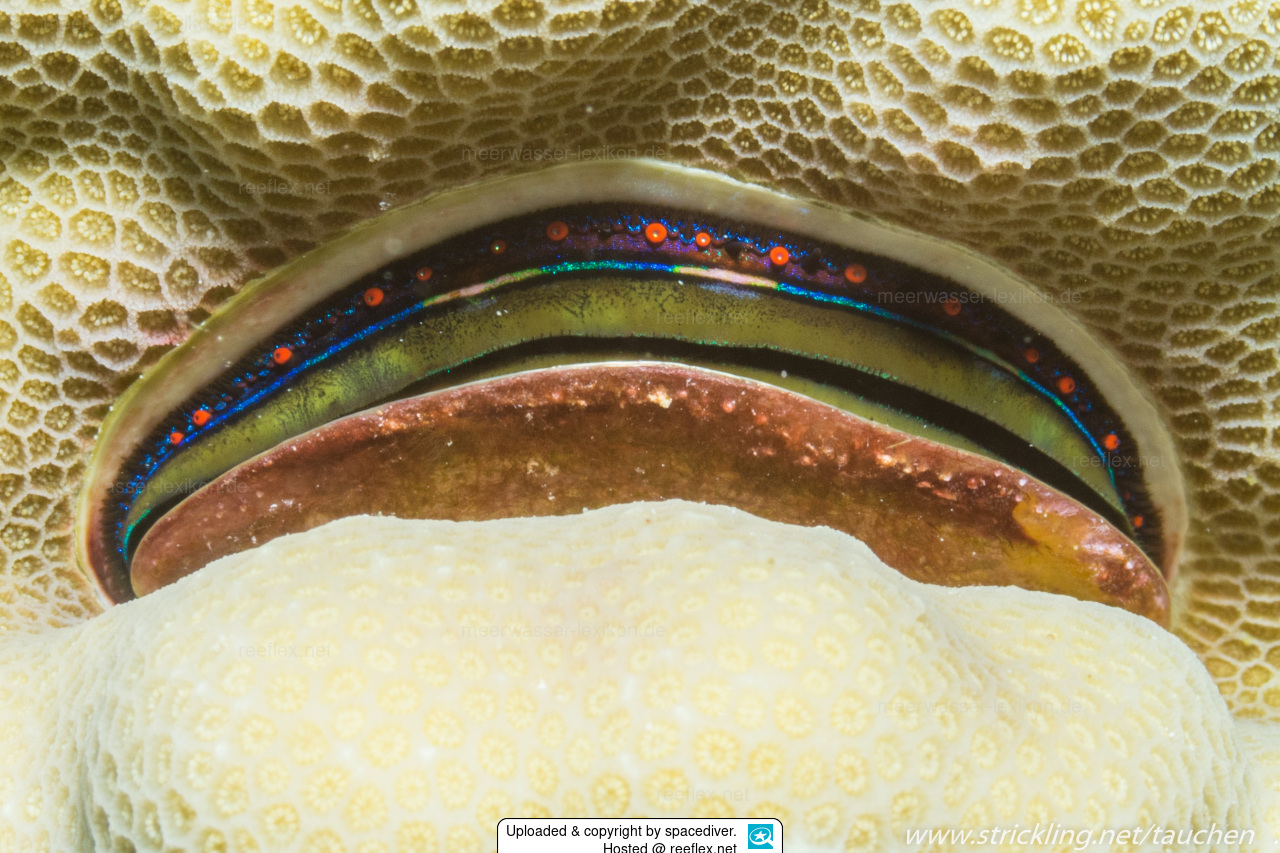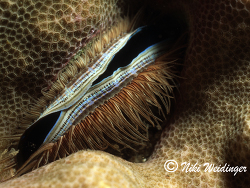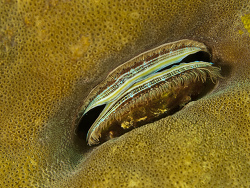Info
Pedum spondyloideum (Gmelin, 1791)
The scallop Pedum spongyloideum is an obligate associate of scleractinian corals - they can only be found in live corals in the wild, where they nest and grow. They attach to their host corals' skeleton with byssal threads and are then being completely overgrown by them, leaving only their shell opening exposed.
Pedum spondyloideum has so far been found in association with about 50 scleractinian species from 7 families, spanning the genera Acropora, Astreopora, Montipora, Coeloseris, Gardineroseris, Pachyseris, Pavona, Coscinarea, Psammocora, Cyphastrea, Echinopora, Favia, Goniastrea, Leptastrea, Hydnophora, Porites and Turbinaria.
Little is known about aquarium husbandry of this species, it should however not be too different from other purely filter feeding bivalves.
Synonymised names
Ostrea pedum Röding, 1798 · unaccepted
Ostrea spondyloidea Gmelin, 1791 · unaccepted (original combination)
Pedum pedum (Röding, 1798) · unaccepted
Pedum pedum intensum Iredale, 1939 · unaccepted (synonym)
The scallop Pedum spongyloideum is an obligate associate of scleractinian corals - they can only be found in live corals in the wild, where they nest and grow. They attach to their host corals' skeleton with byssal threads and are then being completely overgrown by them, leaving only their shell opening exposed.
Pedum spondyloideum has so far been found in association with about 50 scleractinian species from 7 families, spanning the genera Acropora, Astreopora, Montipora, Coeloseris, Gardineroseris, Pachyseris, Pavona, Coscinarea, Psammocora, Cyphastrea, Echinopora, Favia, Goniastrea, Leptastrea, Hydnophora, Porites and Turbinaria.
Little is known about aquarium husbandry of this species, it should however not be too different from other purely filter feeding bivalves.
Synonymised names
Ostrea pedum Röding, 1798 · unaccepted
Ostrea spondyloidea Gmelin, 1791 · unaccepted (original combination)
Pedum pedum (Röding, 1798) · unaccepted
Pedum pedum intensum Iredale, 1939 · unaccepted (synonym)







 spacediver
spacediver











